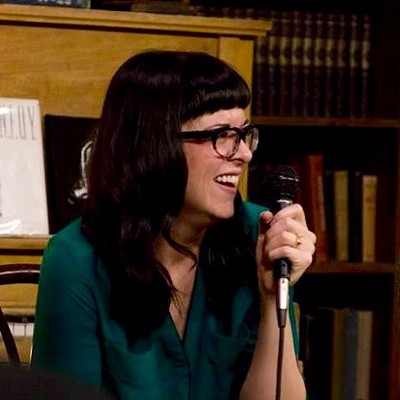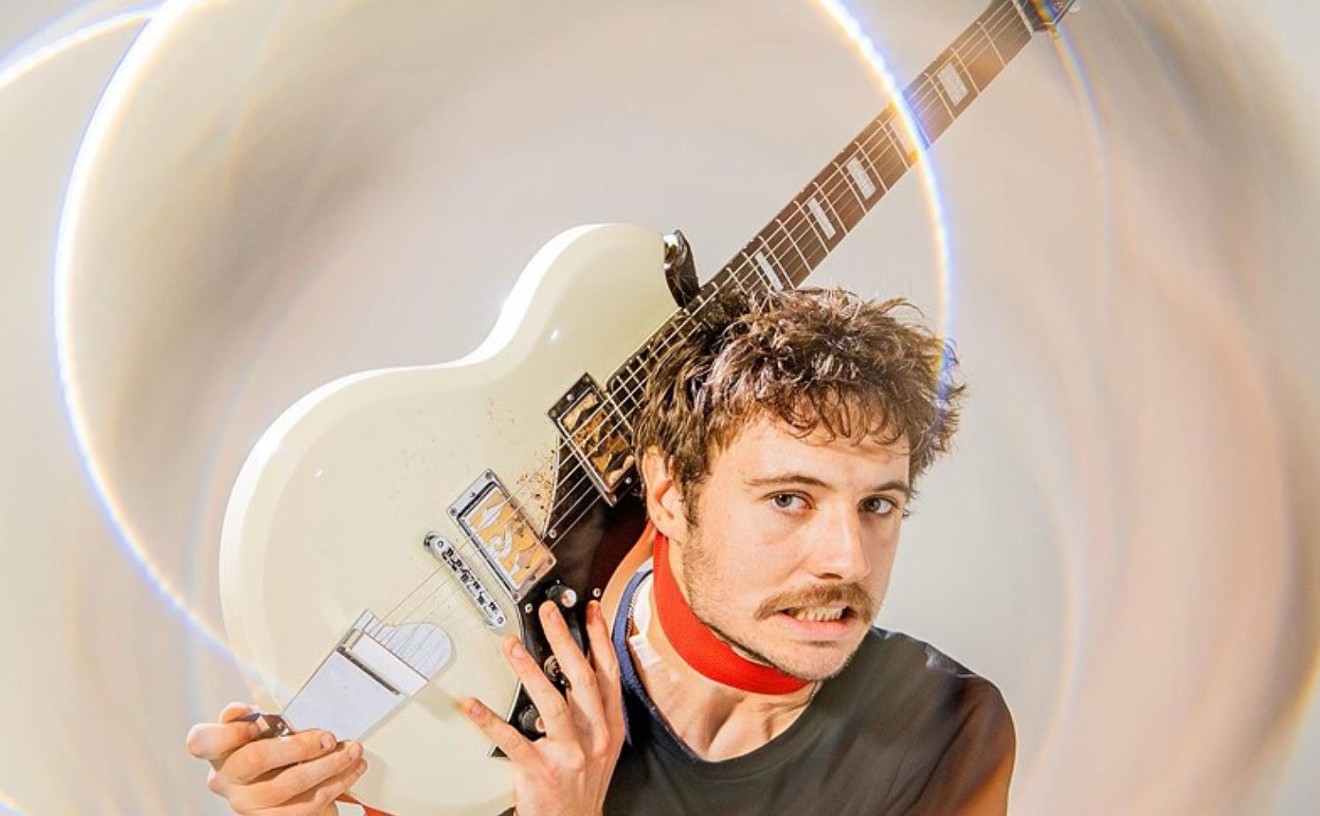I may not remember much of my first rave, but I do know it was complicated to get there. In Denver in 1995, getting to a rave was much more complicated than going to a concert, something I had mastered by the age of fifteen. Concerts were easy to find and, more important, the kinds of concerts I was going to at that age took place at well-known venues and were completely legal. But with raves, it was a process: First, there was the in-person ticket purchase, then the act of calling a phone number the day-of to get the first map point, a place where you would drive to and either get another set of directions or find the rave itself (or the "party," as my older, much cooler and more experienced boyfriend at the time called it).
Looking back on it now, two questions come to mind: First, why in the hell did I go to so much trouble to pay money to stand in a warehouse full of fucked-up people while a faceless DJ remixed a remix of the theme to Speed Racer? Two, why in the hell did I go to so much trouble to find a warehouse that couldn't have been that hard to find in the first place? I mean, this was Denver in 1995; believe it or not, twenty years ago this town wasn't that cool to anyone else — and in turn, it was a lot less populated. The skeleton of the city was always here, but chances are, if you're reading this from the comfort of your urban dwelling or co-working space in an area described as say, RiNo or the Ballpark neighborhood in 2016, know that there was once a dusty warehouse or almost-abandoned building used for raves there.
Still, I'm fascinated by the short portion of my life I spent going to raves. I wasn't necessarily into the music as much as I was into the something-to-do aspect of it all. My life at fifteen was composed of pretty standard fare: If I wasn't in class or teaching gymnastics twelve hours a week, I was smoking cigarettes behind the mall, cruising Colfax, Speer and lower downtown, and going to concerts. When raves entered the picture, teenage life got cooler and weirder. Everyone was a stranger at raves; I don't remember meeting anyone I didn't already come with. One time there was the drug dealer that my friend traded me for in order to get a better deal on acid, but he was certainly not my friend, though we rode in the same minivan to the map point. (He was very disappointed to discover the no-dudes-allowed policy I kept on/for my person, which meant he got the shitty end of that drug trade, but that's another story for another time.)
There may have been a Denver community that truly embraced rave culture; I just wasn't old enough or clued-in enough to know about it. Once I turned sixteen, I was able to go to Tracks 2000 (the delightfully shadier, now demolished precursor to the present-day Tracks) on Thursdays, and I can't even vaguely recall so much as the interior of that place, let alone anyone I met there. All I know is that it was fun to be anywhere remotely adult-like at that age; Tracks 2000 and the dirt-floor warehouses where I spent many Saturday nights blowing a whistle to the beat with glow sticks woven between my fingers were heaven. I don't think we ever grow out of the desire to feel cool, but those moments as a teen Bree when warm waves of hipness rippled through my Hook Ups T-shirt, vinyl miniskirt and Spice Girl platforms-wearing body are irreplaceable.
Taking this hazy, Paul Oakenfold Global Underground 004: Live In Oslo-era wander down memory lane was all spurred by a recent interview I did with Rhea Amos, a writer, producer and artistic director for local horror theater company Pandemic Collective, which is putting on K: The Rise And Fall of The New York Club Kids, running this week only at Milk. The immersive theatrical experience will look at events surrounding the 1996 murder of famed Club Kid Andre Melendez, aka Angel. While I may have been only on the periphery of Denver's version of the now-notorious figures of a nightlife in New York that went grim, I know they existed. I saw them, sometimes at Tracks or a rave, writhing in an admirably free way atop a box, or in a cage in a full-body latex suit or more traditional '90s go-go attire.
Sometimes I would see them in the daylight when I went to buy tickets for raves. They were club kids who hung around and worked at local counterculture clothing merchants like Hotty and Groovalistic (which won Westword's Best Place for Clothes That Won't Make Him Look Like a Middle-Aged Yuppie in 1996) and, of course, FashioNation, when it was still on 13th Avenue. My memory sucks, but I swear there was a shop in Cherry Creek North (Update: The store was called Together World and it was on 4th Avenue and Detroit Street) where I went to find all of my great big ugly raver pants from brands like Kikwear and Buggirl. (Those circus-tent JNCOs were an easy find at mall retailers like Mr. Rags, but the real raver shit was found at smaller stores that catered to the club scene specifically.)
Like many artistic movements, the era of the "rave" seems terminally undefined; its origins span anywhere from the late '70s to present day and cover multiple geographical birthplaces: From Chicago to London, New York to Ibiza, raves were and are everywhere. (By the way, if you haven't been to Milk, it is one of the last remaining nightclubbish spots in Denver that feels like vintage, weirdo Denver, and I highly recommend stopping by for any night it's hosting.)
To me, like everything else I lived through in my little town of Denver, the experiences I had with raves and rave-ish clubs and the rave scene felt so insular. Sure, I saw my fair share of sets from global DJ stars like Rabbit in the Moon, Sasha & Digweed and BT back when I was a wannabe club kid dancing on the grimy floor of an indoor volleyball facility that had placed plywood over its sand pits and rented out the space to a promoter throwing a $30-a-ticket party (which was a high price for a ticket to anything in mid-'90s Denver, for perspective). But in the end, it was less about the music and more about the act of going and what you were wearing when you went.
In 2003, a film called Party Monster was made about the notorious murder of Melendez — and although I was peripherally involved in Denver's rave scene and fascinated by the culture, I have yet to see that movie. It never appealed to me, and it never dawned on me later in life that anything happening in New York would be connected to what was happening in Denver. Our nightlife felt like ours — and it still does. Even though sometimes the Internet makes it seem like we're all exactly the same, every city still has its own brand of scenes.
A few years before I started going to raves, I spent a lot of my middle-school summer vacation days watching daytime television. There, in the early '90s, club kids were given a startling amount of screen time via Joan Rivers, Phil Donahue and Geraldo Rivera's talk shows to, well, be themselves on television. It wasn't until I was much older and out of my raver days that I even made the connection to that early TV exposure to club life and my own experiences with Denver's version of these club kids just a few years later.
Since I have yet to see Party Monster, at 35 I figure that now might be time to get to know this tragic storyline in the history of American club culture better. To experience a theatrical version of a time and place in recent art-music history within the setting of an actual club like Milk seems mind-boggling. Maybe it will become a little redemption for my nameless little raver-girl self, the one quietly grinding against the shiny, padded club walls of the sidelines while the real club kids played Barbie dress-up and danced like everyone at Tracks 2000 was watching. Though no dance club or filthy warehouse party in the pits of old Denver could ever compare to how it was going down in New York City twenty years ago, reliving the '90s in any form is always fun. That's why I've been doing it for the past ten years.
See K: The Rise and Fall of the New York Club Kids at 7:30 p.m. this Wednesday, May 11, at Milk, 1037 Broadway; additional performances will take place May 13 and 14. Tickets are $20 plus a service charge and include entry to Milk’s regular dance night following the show. For more information or to purchase tickets, visit theater company Pandemic Collective's website.
Be my voyeur (or better yet, let me stalk you) on Twitter: @cocodavies
[
{
"name": "Air - MediumRectangle - Inline Content - Mobile Display Size",
"component": "12017618",
"insertPoint": "2",
"requiredCountToDisplay": "2"
},{
"name": "Editor Picks",
"component": "17242653",
"insertPoint": "4",
"requiredCountToDisplay": "1"
},{
"name": "Inline Links",
"component": "18838239",
"insertPoint": "8th",
"startingPoint": 8,
"requiredCountToDisplay": "7",
"maxInsertions": 25
},{
"name": "Air - MediumRectangle - Combo - Inline Content",
"component": "17261320",
"insertPoint": "8th",
"startingPoint": 8,
"requiredCountToDisplay": "7",
"maxInsertions": 25
},{
"name": "Inline Links",
"component": "18838239",
"insertPoint": "8th",
"startingPoint": 12,
"requiredCountToDisplay": "11",
"maxInsertions": 25
},{
"name": "Air - Leaderboard Tower - Combo - Inline Content",
"component": "17261321",
"insertPoint": "8th",
"startingPoint": 12,
"requiredCountToDisplay": "11",
"maxInsertions": 25
}
]











